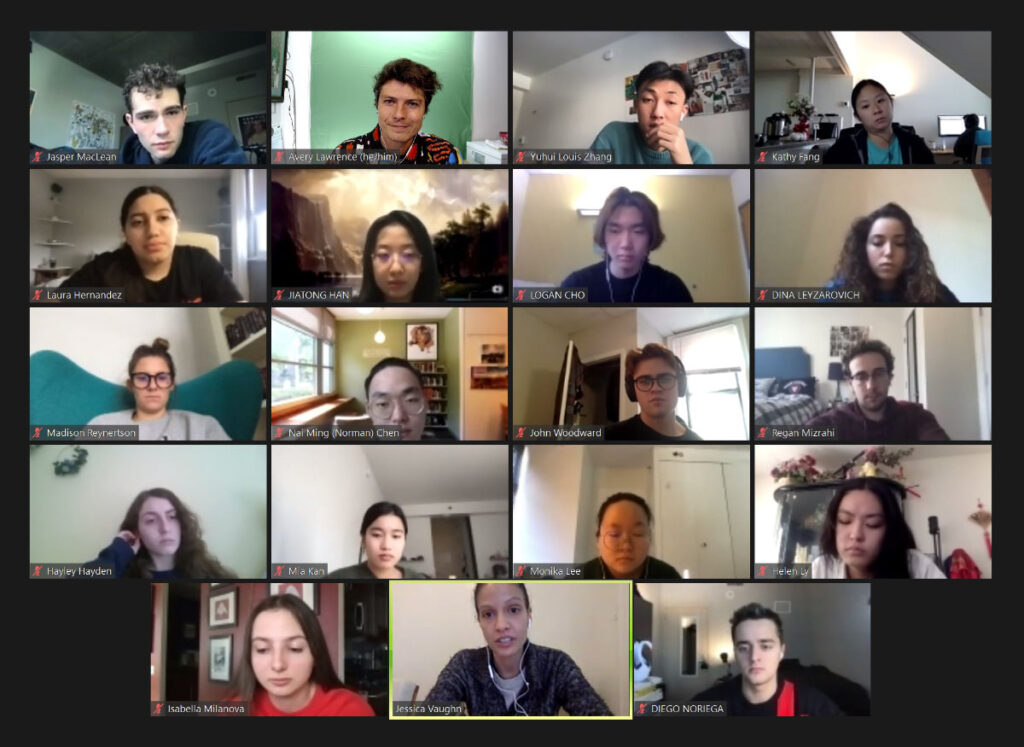0. contents
1. prologue
by Avery Lawrence
PLACEHOLDER “Let’s co-write a response/review/reflection in reaction to our experiences with the exhibition Jessica Vaugn: Our Primary Goal Is To Be Successful at the Institute of Contemporary Art.”
I said that or something like that to 18 University of Pennsylvania students in January of 2021. Thus began an experiment in collaborative art writing. Instead of attempting to emulate a professional art-writing style, the idea was to embrace our amateurishness as we co-crafted an unimpeded – and, maybe, unexpected – written response that reflected our ideas and feelings about an art show. PLACEHOLDER
2. introduction
by Laura Hernandez, Monika Lee & Jasper MacLean
3. labor
by Hayley Hayden, Mia Kan & Diego Noriega
4. architecture
by Dina Leyzarovich, Helen Ly & Louis Zhang
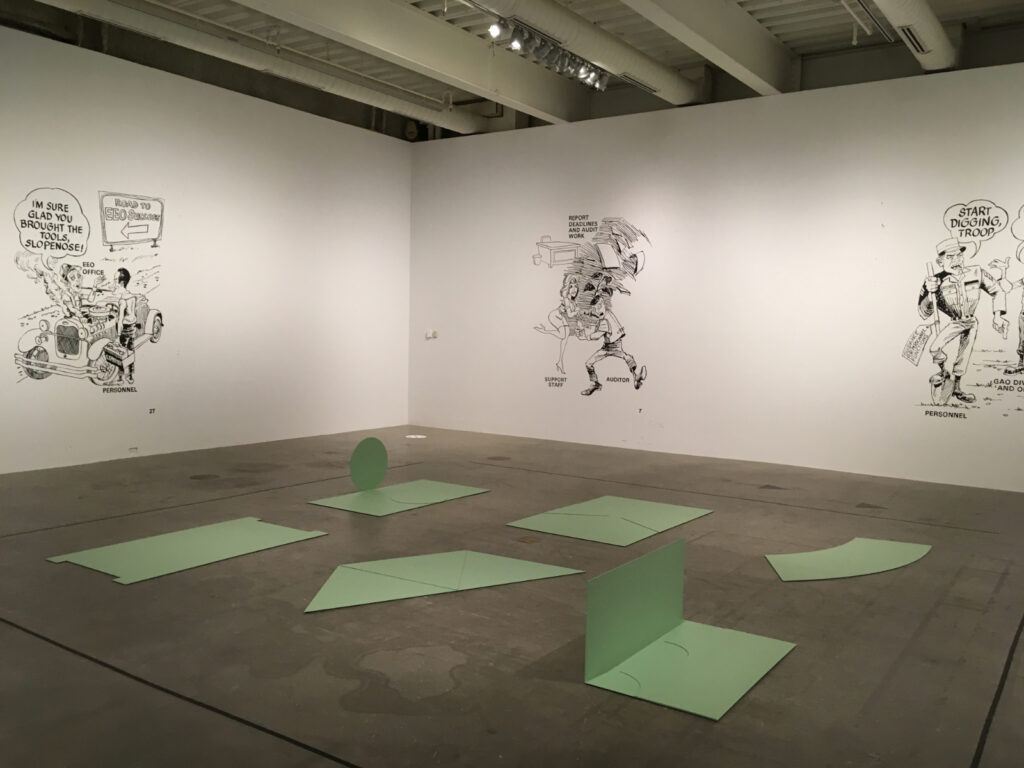
Labor coincides with architecture given the post industrial implications of work. The light fixtures reflect the rigid and robust worklife of white collared workers. In addition, the emphasis on maximizing an employee’s labor is shown in Hope Labor, Flat and Folded in which capitalism requires employees to sharpen their skills to the best of their abilities. How a workplace is constructed contributes to aiding the performance of workers.
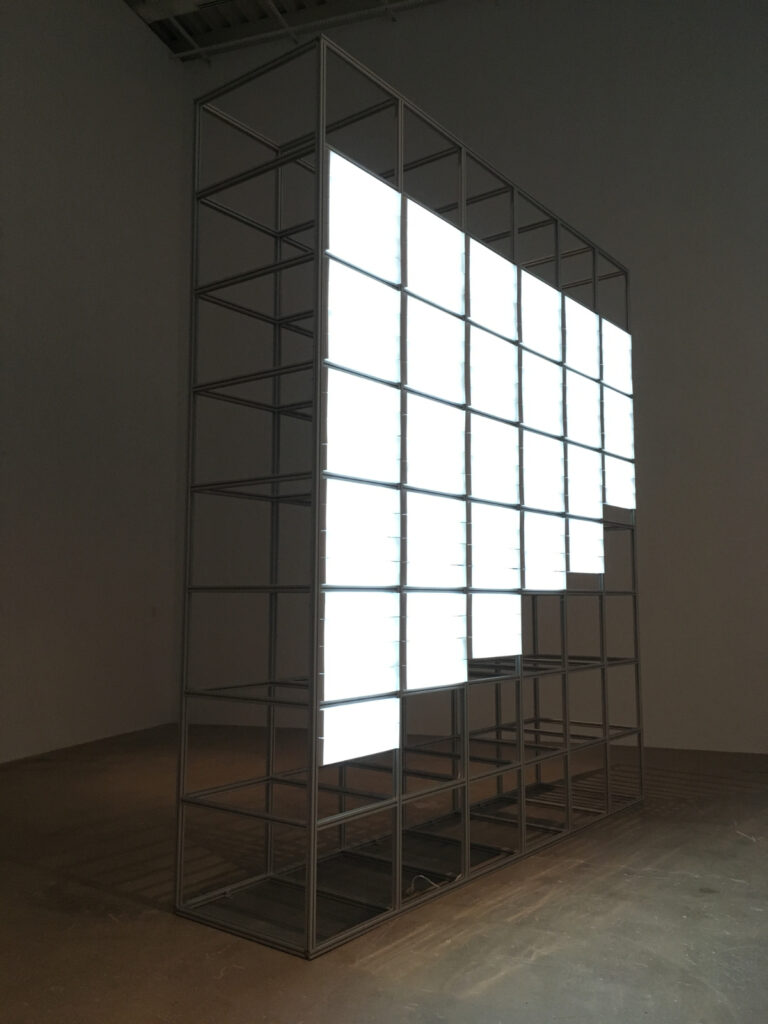
Through Irrational Rests, Jessica Vaugh also draws a connection between modern workplace architecture and the relentless, everpresent nature of our contemporary worklife. Not too long ago, there was architecture that only hosted people during their working hours. Factories, train cabinets, and barns. When we turned off the lights in the workshop and closed the doors behind us, we signaled an end to our workday.
But things have changed since then. Our lights now seldom go off. Parents miss family time on the dinner table because executives are calling in different timezones. The pandemic has forced us to talk in team meetings from our beds. Our worklife is now our life. The nine to five schedule now goes from 9pm to 5am, just like how Vaughn’s lights in Irrational Rests shine brightest at midnight. If the brightness of the office lights in Vaughn’s piece represent how much we work, our employers would want them to shine all the time. Then it becomes rational that we would go to sleep at 3am and nap from 4 to 5pm, because those rest hours are now perfectly situated between one of our working shifts and another.
Then what about architecture? We can keep our working lights on and take our laptops with us when we leave our office, but we can’t bring the office with us. If we now sleep in our offices and work from our beds, then we no longer need specialized architectural spaces and we no longer need “office” and “residential” and “public-facing” in our building programs. The crisis of work invading every aspect of our life is then ultimately also a crisis of architectural design disappearing from every aspect of our life.
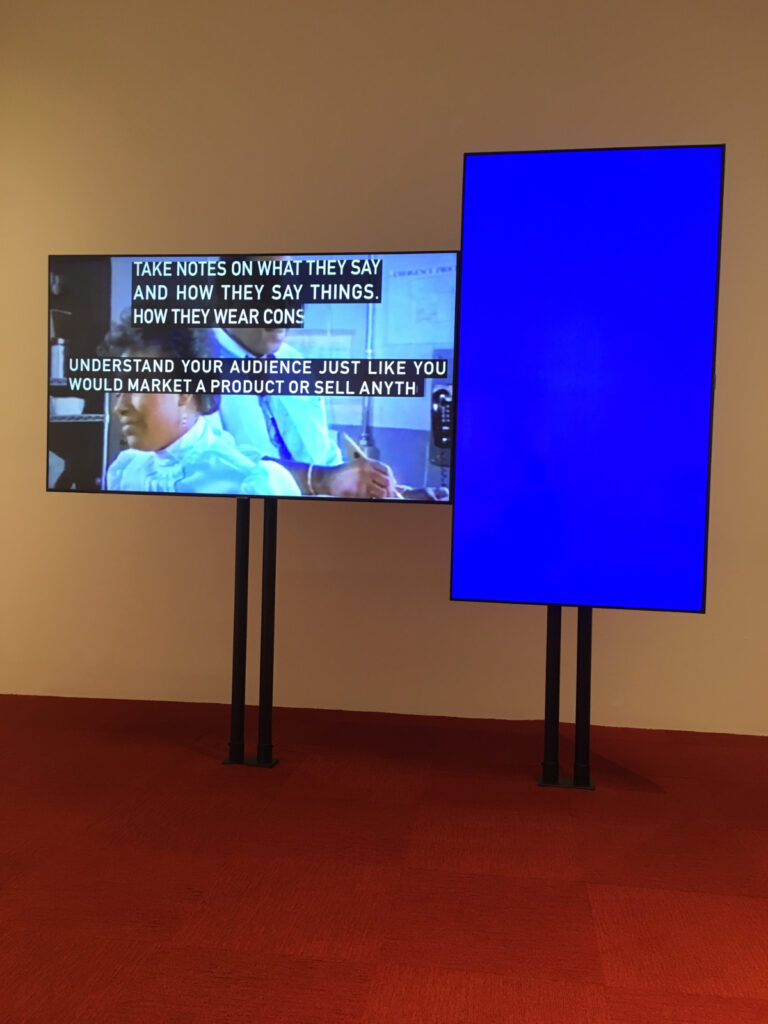
With all these changes, the architecture through which coworkers interact is becoming different as Vaughn discusses in her video piece titled Our Primary Focus Is To Be Successful. The shift to a 24/7 work life has been accompanied by more diversity in the workplace and higher expectations of productivity. There is more pressure than ever to be successful at work because that is correlated with the relationship one forms and how one is treated in respect to their co-workers. This video piece by Jessica Vaughn makes the viewer feel the pressures from the shifts in workplace architecture that have occurred in recent years. Ultimately, Vaughn demonstrates the facade of architecture as a means to house labor, but the implications of this 24/7 work culture will be telling of how future architectural design will be, especially with the changes from the pandemic.
5. materials
by Norman Chen, Kathy Fang & Jessi Han
6. scraps
by Logan Cho, Isabella Milanova & Marisa Senkfor
7. WORK in progress
by Regan Mizrahi, Madison Reynertson & John Woodward
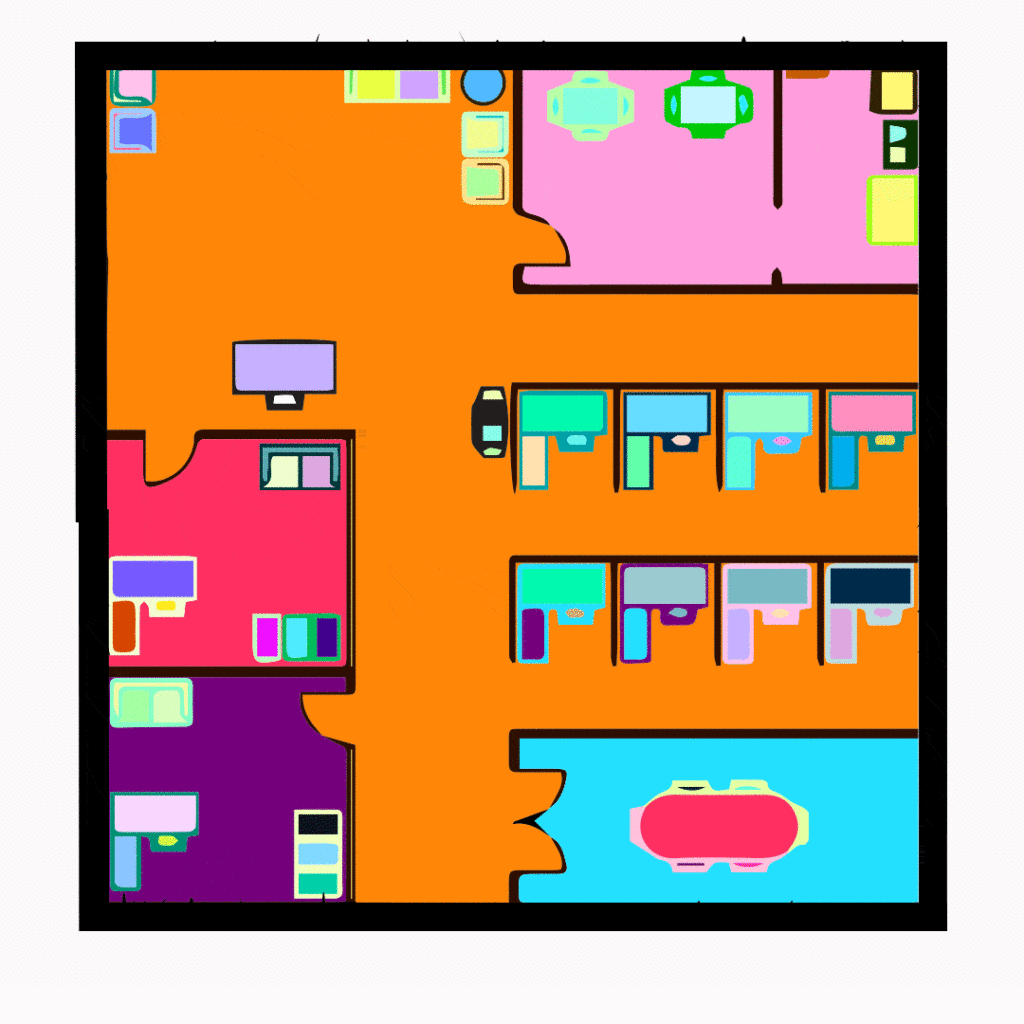
8. epilogue
by Avery Lawrence
I’ll end in gratitude, as I’m want to do.
